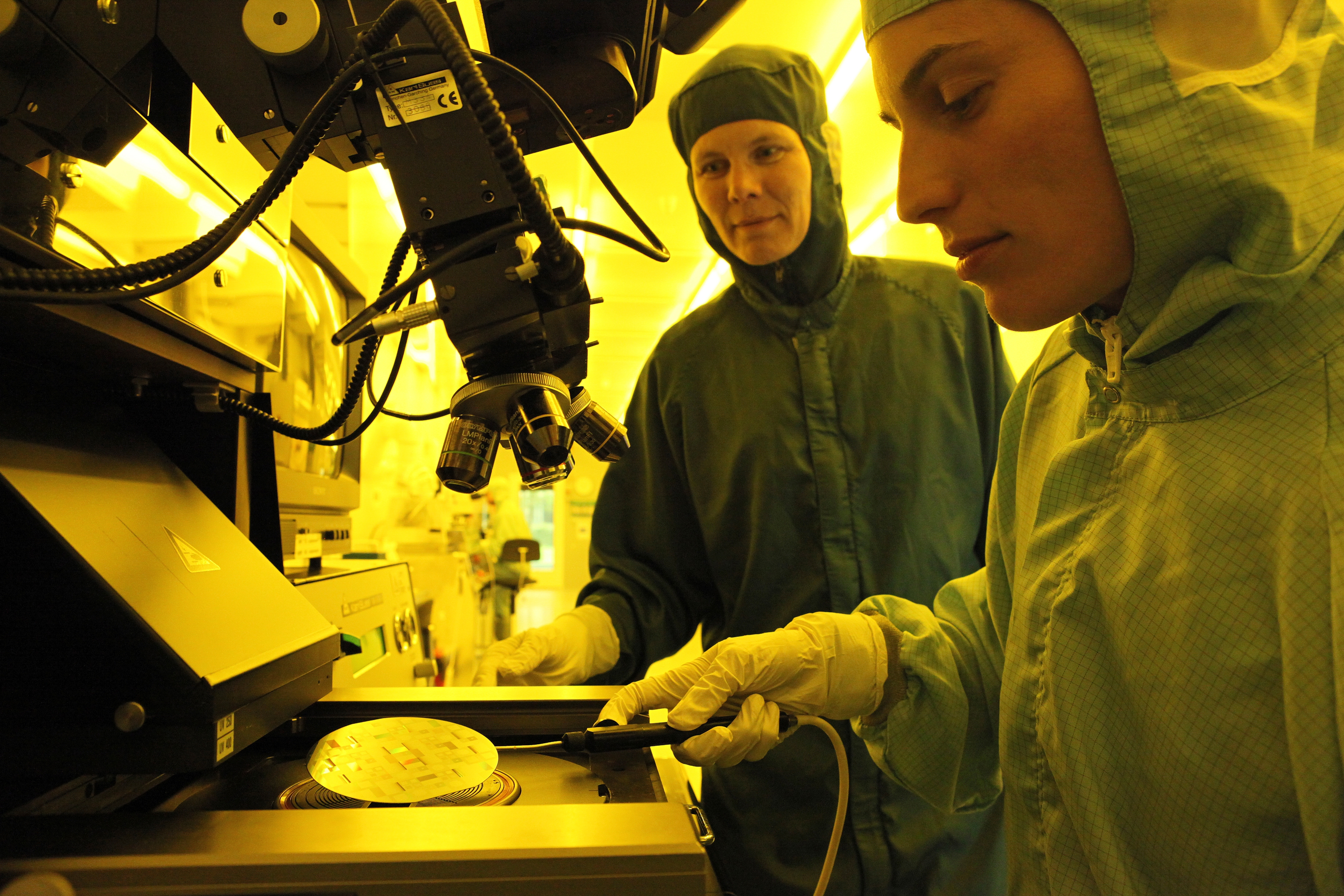Specific Process Knowledge/Lithography/UVLithography: Difference between revisions
Appearance
| Line 16: | Line 16: | ||
** For lift-off processes, we recommend resist thicknnesses ~5 times larger than the thickness of the metal to be lifted. | ** For lift-off processes, we recommend resist thicknnesses ~5 times larger than the thickness of the metal to be lifted. | ||
** For dry or wet etch processes, investiagte the etch rates in resist as this might limit the minimum thickness of your resist. | ** For dry or wet etch processes, investiagte the etch rates in resist as this might limit the minimum thickness of your resist. | ||
* '''Mask''': Design and order a photomask for your UV process. A detailed instruction on how to design and order a photomask can be found here. | * '''Mask''': Design and order a photomask for your UV process. A detailed instruction on how to design and order a photomask can be found [[Specific_Process_Knowledge/Lithography/Pattern_Design_and_Mask_Fabrication#Mask_Fabrication|here]]. | ||
* '''Substrate pretreatment''': In many processes it is recommended to pretreat your wafer before spin-coating. In some spin-coaters, these pretreatment processes are included in the spin coating of resist. If you use either the '''RCD8, SSE or a manual spin coater''', you should book equipment for pretreatment prior to spin coating. | * '''Substrate pretreatment''': In many processes it is recommended to pretreat your wafer before spin-coating. In some spin-coaters, these pretreatment processes are included in the spin coating of resist. If you use either the '''RCD8, SSE or a manual spin coater''', you should book equipment for pretreatment prior to spin coating. | ||
Revision as of 10:39, 6 July 2015
Feedback to this page: click here

UV Lithography uses ultraviolet light to transfer a pattern from a mask to a wafer coated with photoresist. The photoresist film is spin coated on the wafers and the pattern is transferred to the wafer by using a mask aligner. DTU Danchip houses a number of automatic or semi-automatic coaters and mask aligners.
Getting started
Before you start your UV processing, go through the following steps:
- Resist Type: Choose the type of resist you wish to use:
- Positive tone resist: Resist exposed to UV light will be dissolved in the developer. The mask is an exact copy of the pattern which is to remain on the wafer.
- Negative tone resist: Resist exposed to UV light will become polymerized and difficult to dissolve. The mask is an inverse copy of the pattern which is to remain on the wafer.
A list of UV lithography resist types available at DTU Danchip can be found here.
- Thickness of resist: In general, it is recommended to work with an aspect ratio of ~1, i.e. where the widths of the pattern is in the same order of magnitude than the thickness of the resist. Furthermore, when you decide for the resist thickness, consider which transfer you need:
- For lift-off processes, we recommend resist thicknnesses ~5 times larger than the thickness of the metal to be lifted.
- For dry or wet etch processes, investiagte the etch rates in resist as this might limit the minimum thickness of your resist.
- Mask: Design and order a photomask for your UV process. A detailed instruction on how to design and order a photomask can be found here.
- Substrate pretreatment: In many processes it is recommended to pretreat your wafer before spin-coating. In some spin-coaters, these pretreatment processes are included in the spin coating of resist. If you use either the RCD8, SSE or a manual spin coater, you should book equipment for pretreatment prior to spin coating.
Resist Overview
| Resist | Polarity | Spectral sensitivity | Manufacturer | Comments | Technical reports | Spin Coating | Exposure | Developer | Rinse | Remover | Process flows (in docx-format) |
| AZ 5214E | Positive but the image can be reversed | 310 - 420 nm | AZ Electronic Materials | Can be used for both positive and reverse processes with resist thickness between 1 and 4 µm. | AZ5214E.pdf | SSE,
KS Spinner or |
KS Aligner, | AZ 351B developer
or |
DI water | Acetone | |
| AZ 4562 | Positive | 310 - 440 nm | AZ Electronic Materials | For process with resist thickness between 6 and 25 µm. | AZ4500.pdf | SSE or | KS Aligner, | AZ 351B developer
or |
DI water | Acetone | Process_Flow_thick_AZ4562.docx |
| AZ MiR 701 | Positive | 310 - 445 nm | AZ Electronic Materials | High selectivity for dry etch.
Resist thickness 1 - 2 µm. |
AZ_MiR_701.pdf | Spin Track 1 + 2 | KS Aligner, | AZ 726 MIF developer | DI water | Remover 1165 | Process_Flow_AZ_MiR701.docx |
| AZ nLOF 2020 | Negative | 310 - 380 nm | AZ Electronic Materials | Negative sidewalls for lift-off.
Resist thickness 1.5 - 3 µm. |
AZ_nLOF_2020.pdf | Spin Track 1 + 2 | KS Aligner, | AZ 726 MIF developer | DI water | Remover 1165 | Process_Flow_AZ_nLOF_2020.docx |
| SU-8 | Negative | 350 - 400 nm | Microchem | High aspect ratio.
Resist thickness 1 µm to several 100 µm. |
SU-8_DataSheet_2005.pdf, SU-8_DataSheet_2075.pdf | KS Spinner | Aligner-6inch,
KS Aligner or |
mr-Dev 600 developer (PGMEA) | IPA | Plasma ashing can remove crosslinked SU-8 | Process_Flow_SU8_70um.docx |
